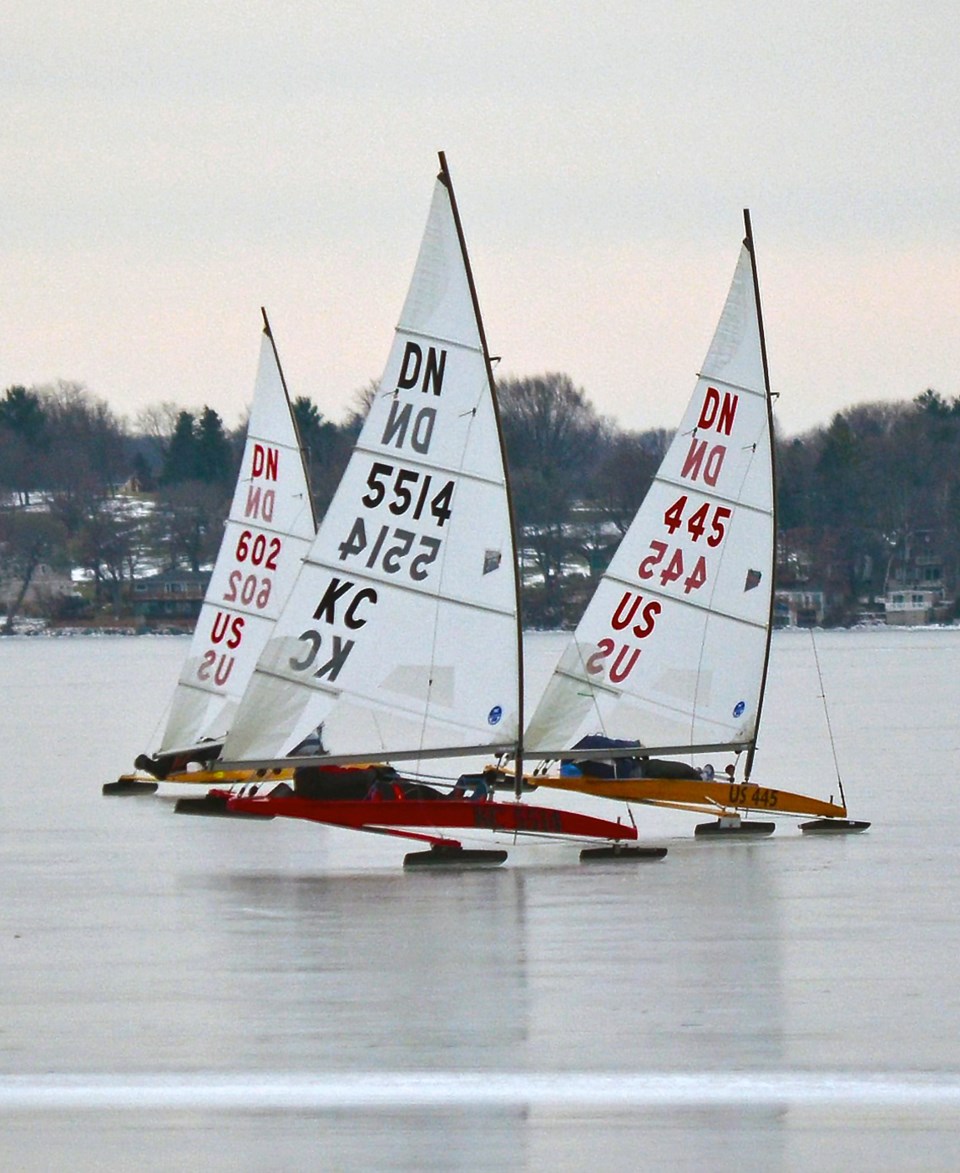YORKTON - When it comes to sports writing it is fun to occasionally go off the well-worn path to do an article on something a little different.
So strap on some skates and tag along this week as I chat ice sailing with sport aficionado John Curtis.
Curtis actually came to ice sailing after achieving a high level of success sailing on water – he was a 16-year veteran of the Canadian Sailing Team, and represented Canada in sailing at the Olympic Games in Athens in 2004, in the Tornado Class.
“I didn’t really know much about ice boating,” he told Yorkton This Week.
As a kid growing up in Barrie, Ont. he had seen ice boats out on the lake but was firmly a soft water sailor.
Later in life there came a day he was asked to give ice sailing. a try.
Once on the ice it was “how do you stop this thing,” he said. “I was going faster and faster and faster. A sail boat (on water) is not like that. It was quite frightening at first.”
But when he learned to stop, Curtis said he quickly appreciated the sport.
“Then I just got completely hooked,” he said.
As a sailor he said he quickly realized an ice boat responds quickly to the driver.
“Even if you make subtle changes you feel the change immediately. As a student of the game that’s really something,” said Curtis. “ . . . In ice sailing the boat speaks loudly to you.”
Curtis likened ice sailing to rock and roll music with the volume up.
“It’s like you’ve turned up the dial on every little thing on the boat,” he said.
An ice boat “is also a very precise instrument,” said Curtis, adding it responds so quickly. “It’s like you’re working with a fine-tuned instrument ... Ice boats are like the Stradivarius of boats.”
Speaking of the Olympics, ice sailing would seem a natural fit for winter inclusion.
“It almost was in 2002 in Salt Lake City,” said Curtis. “They were thinking about it . . . They were thinking about putting in a bid to be part of it.”
However the stumbling block was a venue for a sport that needs a large patch of ice – preferably at least six kilometres square – without too much snow cover, no sudden rain, and of course a high likelihood of wind.
Curtis said all the parametres of a venue meant ice sailing might have to change lakes on a day, or two notice, and for the Olympics who seek television coverage, that made broadcasters uneasy.
And the technology in 2002 was an issue too. Aerial shots meant “they had to hire a helicopter” not simply send up a drone, said Curtis.
With the modern tech ice sailing might still be an Olympic sport one day.
“It really may come back around,” said Curtis.
So when it comes to ‘best’ conditions, what are they?
A large open area of smooth ice.
“Ideal is what we call ‘black ice’,” said Curtis.
Black ice is ice so clear you can only see the blackness of the water below, explained Curtis.
While some bumps are OK, ice boats have suspensions, the less the better, and nothing too extreme.
Same with snow.
The boats can manage a couple of centimetres of snow, even that will slow the boats.
“It slows the craft down cutting through the snow,” said Curtis.
The wind needs to be just so too, at least six kilometres and hour and nothing over 25 kms.
“Once it’s over 20 it’s pretty spicy,” said Curtis.
When everything is just right “the boats go very fast,” said Curtis, adding that means up to 80 kilometres an hour.
Overall, ice sailing is most popular in Europe, with Poland leading the way, said Curtis who added it is likely the 2024 world championships will be in that country in February. The worlds are expected to attract about 200 racers – two of those from Canada Curtis and Jacek Marzenski.
Canada has never won a medal at a world championship. Curtis hopes to change that.
“I think I have a shot at a medal,” he said.

